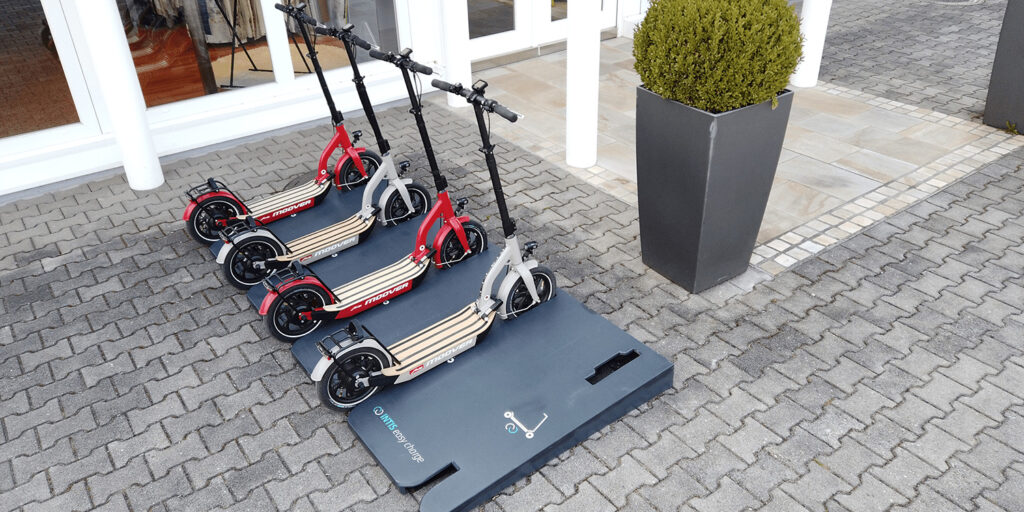
Electric scooters have a wide range of battery life, ranging from six months to five years, lasting two to three years.
A battery’s lifespan is better measured in charge cycles than in time because time measurement is less precise. The best quality electric batteries can reach up to 1000 cycles of full charging, and most batteries will last between 300 and 500 full charges.
During the first few hundred charge cycles, battery performance will gradually degrade. There is a rare occasion when a battery will receive a full charge cycle from 0 to 100%. The difference between 600 and 1000 charges from half to full is about 300 to 500 full cycles.
You can expect your scooter’s battery to last between 1 and 2 years if you charge your battery daily. The most accurate estimate for most people is to charge it every two or three days. Therefore, you can expect to get at least 2 years from your battery and possibly even 5 years!
The functioning of an electric vehicle depends upon the health of the battery inserted inside that vehicle. If the battery works fine, so will the vehicle. But if there is a fault in the battery, it needs to be replaced or repaired depending upon the nature of the fault. Some measures need to be taken to increase an Electric Scooter Battery Life or maintain it.
For example, one should keep in mind that the battery does not overcharge, and if it does, its health will start to ruin. Also, for longer battery life, it should be made sure that the battery charger used for charging the electric scooter is own and not just any other charger. There must be one specific charger, and the battery should be charged with the same charger.
Battery health also depends more on which charger is being used to charge it to a more considerable extent. The whole functioning of the electric scooter depends on the health of its battery. If the battery works fine, so will the scooter, and if the scooter works fine, it will work efficiently for you to complete your tasks. So, an Electric Scooter Battery Life can be maintained or even increased only by paying attention to the dos and don’ts while you charge your vehicle.
Understanding Battery Lifetime
A typical Li-ion battery will be able to handle 300 to 500 charge/discharge cycles before diminishing in capacity. For your average electric scooter, this is anywhere from 3,000 to 10,000 miles. There are some things you as a consumer can do to extend the overall lifespan of your battery. Here are just a few things to consider.
Don’t Fully Deplete or Drain the Battery – Electric Scooter Battery Life
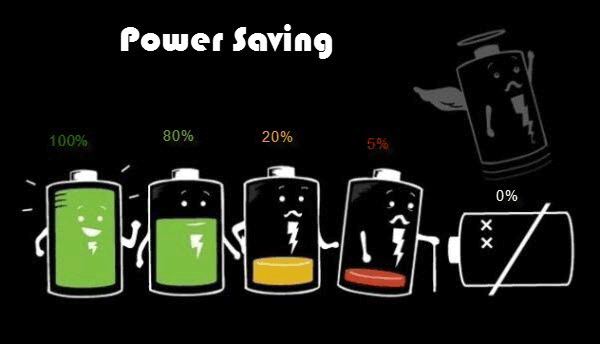
Due to the nature of lithium-ion battery designs, it is a good idea to avoid fully depleting the battery as you ride your electric scooter. Try to keep the battery above a 10 percent charge, with 40 to 80 percent being the optimal amount of charge to shoot for. We recommend charging the scooter immediately after a ride and then immediately before a ride so as to keep the battery working efficiently. You may need to do some planning to get the routine down, but it will be worth it in the long run. Knowing how long it takes for your e-scooter battery to charge will help in planning.
What batteries do electric scooters use?
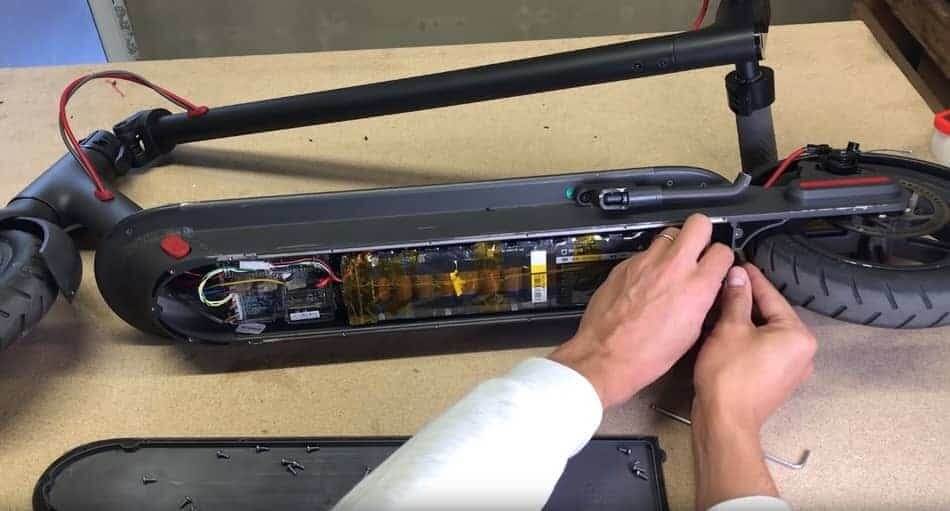
Most electric scooters use lithium-ion batteries. These lightweight, rechargeable batteries are so powerful they are frequently used in the military and aerospace industries.
Lithium batteries have more capacity, a longer life cycle, and charge faster (and more efficiently) than other lead-acid batteries. They are also much lighter in weight than lead batteries and are far more efficient, meaning they last much longer.
The Unagi Scooter Model One electric scooter’s, for example, has a 9000mah lithium-ion battery.
It has the highest energy density and the shortest charging time of any battery of its size when combined with the custom-designed management system. When we designed the battery, our primary focus was on longevity and dependability, so you can be assured your Unagi battery will last for many years even with daily use.
However, despite their technological superiority, lithium-ion batteries are not indestructible, so you must treat your battery gets as the powerful and complex piece of technology that it is.
How Can I Enhance the Battery Life of My Electric Scooter?

We will outline and answer your question about how Long Do Electric Scooter Batteries Last? and how to take important and impactful steps to enhance your battery life of an electric scooter.
1. Be Careful Not to Drain Your Battery Completely
Keeping your battery from completely draining is the best way to prolong battery life. The world won’t end if this happens. It is important to remember that a fully discharged electric battery will wear out a little more quickly than one that is not.
There is a function in some lithium-ion batteries that become active when the battery runs out, and this makes it unresponsive to a normal adapter and may even appear dead. The battery will have to be rechargeable using a different type of charger.
2. Maintain a Constant Charge on Your Scooter
You should charge it frequently to keep your scooter’s battery in good shape. No matter how small the usage, experts recommend charging it immediately after use. A battery’s performance varies from one to another.
Most importantly, ensure not to plug in your scooter instantly after riding. Plug the charger in after it has cooled for half an hour – charging it while it is hot will cause it to degrade faster.
3. Be Careful Not to Overcharge Your Battery
It is still not smart to leave your scooters charging after their batteries are full, although many won’t be damaged. Battery damage is rare, but it does happen. You can receive notifications when the scooter’s battery is fully charged through many electric scooter apps.
4. Keep It Away from Water
Most electric scooter manufacturers claim that their products are water-resistant, and most of today’s models have an IP rating, meaning they are at least somewhat water-resistant. Every brand agrees that riding a scooter in rain or damp conditions is not a good idea.
Many scooter owners ride their scooters in the rain without any reported damage. Nevertheless, there may be a problem they are overlooking. Even small amounts of water can damage the battery, and however, they can also cause corrosion or accelerate the aging process. Ensure that your scooter’s battery is always dry..
5. Excessive Temperatures Can Damage Batteries
The best performance of electric batteries is attainable at room temperature. Temperatures outside of that range lead to faster degeneration and less efficient performance. Batteries operate best at temperatures between 20 and 30 degrees Celsius. The performance of these devices starts to decline below 0°C and above 40°C.
The battery’s lifespan will be extended to its maximum if stored at ideal temperatures. The best thing to do is to avoid riding your scooter in extreme weather conditions since that isn’t always possible.
6. Keep Your Battery Out of the Sun When Charging It or Keeping It on Charge
The substances in your battery may react unwanted if you expose them to the sun for too long. This can lead to a variety of chemical reactions. The battery will either be ruined or its performance will be greatly diminished.
The battery might not charge if you charge it under the sun, and this is due to mechanisms that prevent the battery from being charged. Alternatively, the battery may overheat or explode if it breaks the protection circuit.
7. Use the Genuine Adapter
One of the most efficient ways to charge your scooter is to use the original charger that came with it, and everything is already suitable for your battery voltage life. You should be able to get the same charger from the same manufacturer in case anything goes wrong.
To ensure that the charger you use your scooter to charge with matches the original charger’s voltage and charge capacity, ensure it has the same voltage and charge capacity as the original charger. Don’t use a charger that differs greatly from the original. Do it only if you have no choice.
8. The Charging Rate Should Be Average or Slower
Chargers are often needed more than once a day by scooter users who travel long distances. Chargers with higher capacities (expressed in Ampere-hours, or Ah) are sometimes used for this purpose. Using these speeds up the charging process, but at the same time, they cause the batteries to deteriorate faster and last less. You should avoid charging with chargers with higher capacity altogether if you care about battery lifespan.
9. Keep Your Tires Fully Inflated
It is important to note that riding with partially deflated tires causes more friction, resulting in the scooter working harder to cover the same distance. The battery will end up being charged more frequently, and you’ll have to charge it more often, thus shortening its lifespan.
Ensure your tires are sufficiently airtight (but don’t overinflate them). By doing so, you will be able to optimize many aspects of your ride, including the battery life.
10. Store Your Scooter Properly
It is important to keep your scooter in a cool, dry, dark place when storing it for a long time. Ensure that the battery is charged at around 60% every month and recharged to the same amount.
11. Know Your battery specification for e-scooter’s battery Type
Different makes and models of electric scooters use various battery types. You need to know about the electric scooter and what type of battery yours has in order to charge it correctly.
“Rechargeable batteries’ AKA 18650 battery cells are the most common type of e-scooter battery. These batteries can be charged using a standard charger at home.
This is very convenient because the batteries can be charged at any time, as long as possible you have access to a charger, meaning you don’t need to carry spare batteries with you.
12. Keep the battery at its optimum charge
One way to prolong the life of an electric scooter battery is to never drain it. Although completely draining and then fully charging a battery may be effective for some devices, it will not work for electric scooter batteries. To maintain the lifespan of a battery, keep it charged between 10% and 40% of the time.
Also, avoid riding up steep hills as fast as you can i.e. in the fastest speed mode, especially if your e-scooter is not designed for climbing. This will strain your battery and cause it to drain faster.
Finally, the most effective way to keep your battery from draining is to charge the battery after each use. Even if your electric scooter still has a lot of battery charge left after a full day of traveling, make it a point to charge it at the end of the day. This will reduce the strain on your battery and keep it in good working order.
Plus, your electric scooter will always be charged and ready to go when you need to get some fresh air.
How Long Do Electric Scooter Batteries Last? Average Range
Lithium Ion electric scooter batteries will last between 500 and 1000 charge/discharge cycles if well cared for. For most electric scooter riders this is from 2 to 5 years.
How far can an electric scooter go on a full charge? Electric Scooter Range
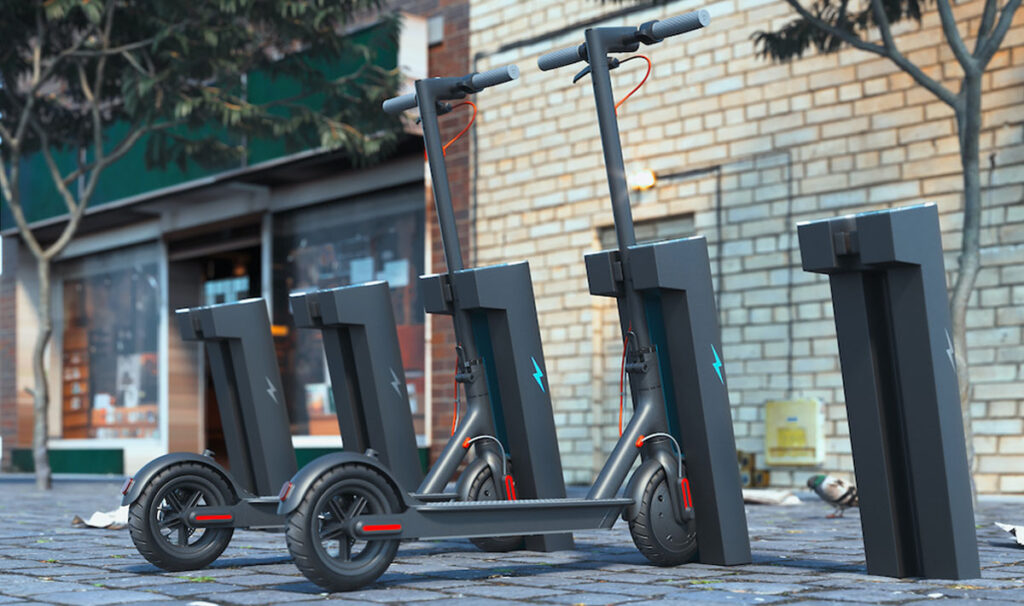
Electric scooters have a range anywhere from 10 miles to 90 miles. The average electric scooter that costs effective below $1000 has a range from 10 to 20 miles. There are many ways to reduce the range of an electric scooter. Doing any of the following will reduce the range of your electric scooter.
- Heavier rider weight
- Riding up a lot of hills
- Accelerating quickly from stop
- Riding at full throttle
- Riding on very hot days
- Riding on very cold days
If you would like get the most range out of your scooter you should treat it gently. Slower speeds and slower acceleration will give you more range. Avoid carrying extra weight on your scooter. If you don’t need something where you going, leave it at home instead of bringing it just in case.
How can I make my electric scooter battery last longer?
To get the most out of your electric scooter battery, you need to give it proper care. Most scooter batteries will leave for several years if properly cared for. At least 2 to 5 years or 500 to 1000 charge and discharge cycles. If you do not take good care of the batteries they could have a much shorter life.
How do you care for an electric scooter battery? Charge your Electric Scooter Battery don’t Overcharge

The battery is likely the most exensive part of your entire scooter time to replace if you can replace it. It is also the area you should devote the most attention to care. I heard this saying once. “Most batteries don’t die, they are murdered” it is for the most part true.
These are things that batteries do not like:
- Overcharging
- Discharging too far
- Overheating
- Charging too fast
Doing any of the above will reduce the life of the battery or worse.
Many scooters these days have lithium polymer or lithium-ion batteries. There are still a few hanging on with lead-acid or nicad/nihm batteries but they are few and far between.
Lithium batteries need to be treated with respect. Only use a charger designed for the battery scooter pack in your scooter. Lithium batteries can ignite and burn if overcharged or charged too quickly. The fire is hot enough to burn through metal and ceramic. You don’t want one to catch fire. Just because the connector fits from someone else’s charger, doesn’t mean you should scooter after every use it. See this article from OSHA about lithium batteries and their hazards.
Always keep your scooter charged at least a little. If you discharge lithium batteries too far, they become damaged and can’t accept charge again. Lithium batteries will slowly discharge over time when not in use. They do not self discharge as fast as other battery chemistries but they still do. If you run your scooter until it cuts off due to a dead battery, you should charge it before storage.
Do not leave an electric scooter on a charger unattended. You shouldn’t hook it up to charge and then leave home for a few hours and hope for the best.
Heat can damage your scooter batteries. When you are done riding your scooter, if the batteries are hot, let them cool down a bit before charging.
When Should I Replace the Battery on a Scooter? New Electric Scooter Battery Cost.
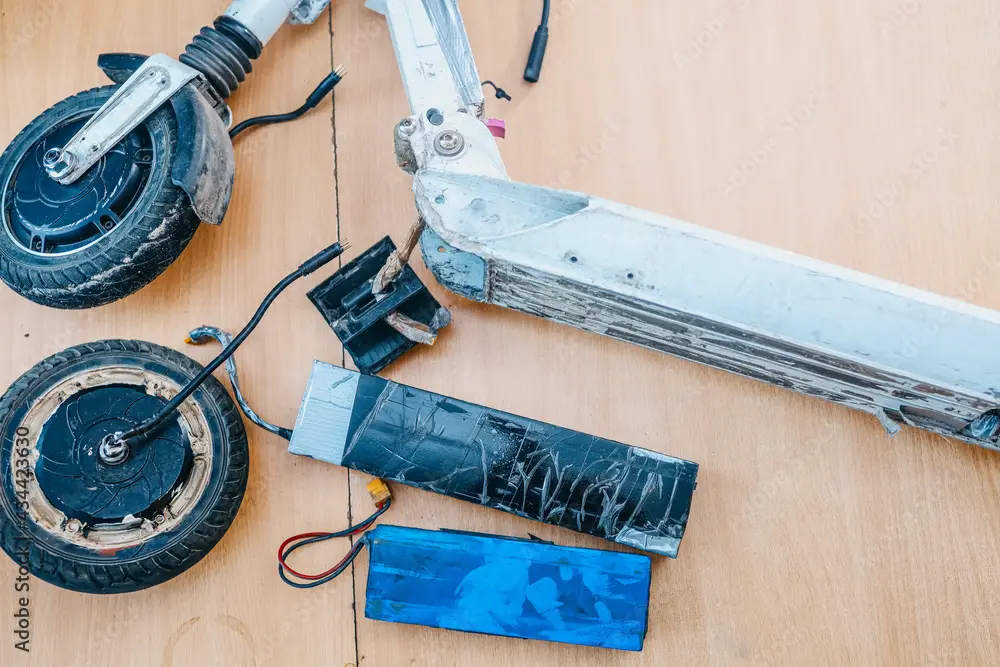
The range of your scooter will be the best indicator that you may need to replace your battery. You may need to replace your battery if your scooter’s range drops to half or less or if its battery is worn out. A new battery should be considered when your scooter’s performance has dropped to a point where it is no more usable.
Q: How long do electric scooter batteries last per charge?
A: around one hour
An Electric Scooter’s Battery
A single charge will typically last for around one hour. The range of factors that influence how long the battery lasts means that one charge can help you to travel different distances
Q: How far can an electric scooter go on a full charge?
A: between 35-40 miles
An electric scooter can cover between 35-40 miles on average on one full charge. Nevertheless, that depends on several factors.
Q: How many years does a scooter battery last?
A: In a ‘light’ mobility application, such as using your scooter once or twice a week, the battery can deliver up to three years lifespan. In a ‘heavier’ application, however, such as using your scooter daily on long journeys, the lifespan could be between 12 and 18 months.
Q: Should I charge my scooter everyday?
A: It is not necessary to charge your scooter everyday or charge after every ride. The best practice is to keep the battery between 30% to 80%. However, if you’re going on a long ride then give the scooter a full charge.
Q: Should I charge my electric scooter everyday?
A: Don’t leave it too long between charges
For best practice you should fully recharge your electric scooter each day after you use it without overcharging it. Even if you are not using it every day though, plug it into a charger from time to time to keep the battery turning over.
Q: Is electric scooter good for long drive?
A: Our Verdict. For occasional long rides, a scooter may not be a bad choice as modern scooters come with enough power and potential for the same.
Q: What if electric scooter battery dies?
A: In the event that your e-scooter runs out of battery while riding, you can: Try to continue to push and ride the e-scooter manually. If you are unable to ride the e-scooter, find the nearest Beryl Bay and lock the e-scooter to end your ride.
Q: Can you replace battery on electric scooter?
A: Most electric scooters use only one battery, but there are electric scooters for sale online that offer swappable batteries, such as the Mearth S Series. If you accidentally damage your battery or if it wears down quickly, you need to replace it immediately to avoid further damage to your e-scooter
Q: How often do you need to replace a scooter battery?
A: Most manufacturers recommend that you begin planning for a replacement every eighteen months, especially if you notice that your battery is sluggish or does not hold as much of a charge as it used to. Once a battery begins noticeably degrading, it could deteriorate quickly as you fight to keep it charged.
Q: Do electric scooters take a lot of electricity?
A: In the US, owners of budget, low capacity electric scooters can expect to pay $3.03 per year, on average, to charge their e scooter enough to reach the 1,456 mile average. The charging costs work out at under 6 cents per week and 25 cents per month.
Related Articles
3 Types of Electric Scooter Batteries – Guide to Electric Scooter Batteries




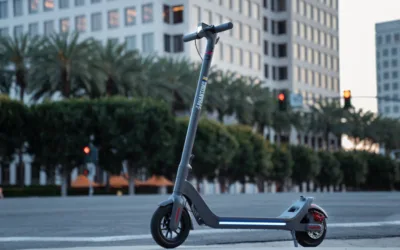


0 Comments